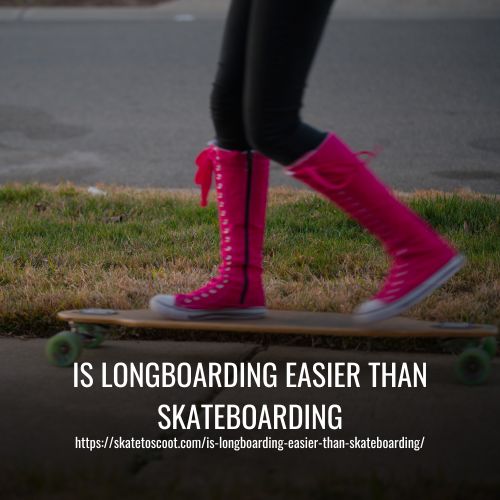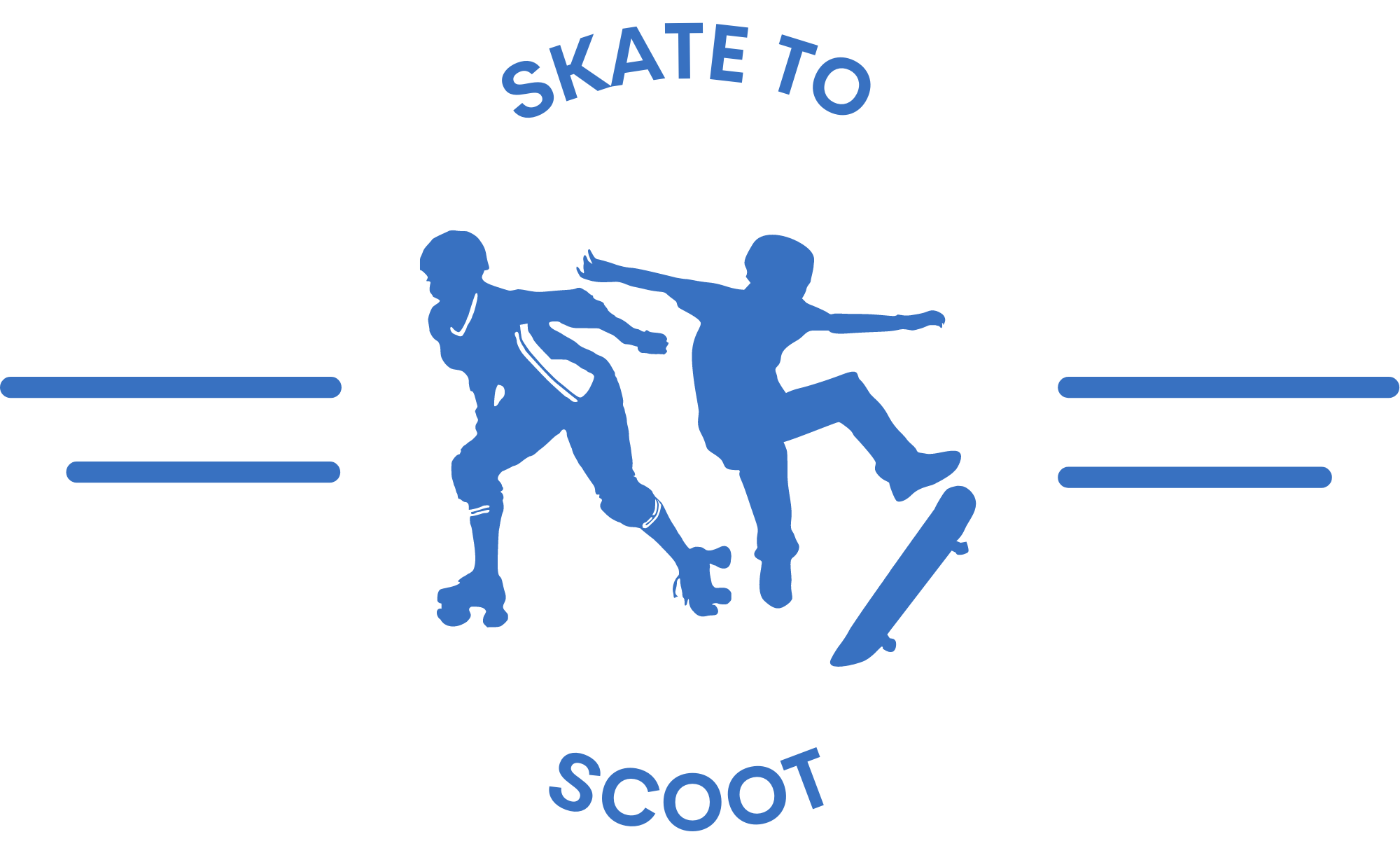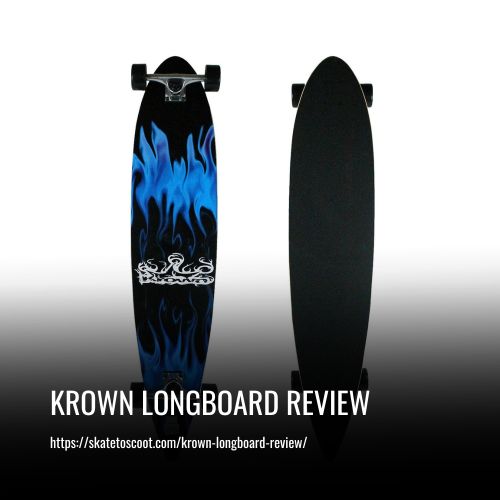As an Amazon Associate we earn from qualifying purchases.
Yes, longboarding is easier than skateboarding. Longboards have a wider and longer design, along with softer wheels, which provides better stability and balance. On the other hand, skateboards are smaller and have harder wheels, making them more challenging to ride and maintain balance. The differences in design and wheel hardness make longboarding a more accessible option for beginners or those looking for a more stable riding experience.

Differences Between Skateboarding and Longboarding
Skateboarding and longboarding may appear similar to many individuals, but there are distinct differences between the two. While some of these discrepancies are noticeable just by observing the boards, there are several key factors that set them apart.
1. Board Design and Ride Experience
Longboards are specifically designed for smooth rides and facilitated turning. They feature larger wheels and trucks and have a significantly larger size. Due to their construction, longboards are less agile and require more time to gain speed. However, they provide a smooth riding experience, making them ideal for long rides.
On the other hand, skateboards are much smaller in size and come equipped with harder and smaller wheels. Designed for tricks, skateboards accelerate much faster compared to longboards but offer a less stable ride.
2. Performance and Use
Longboards are more suited for cruising and transportation purposes, focusing on comfort and stability. Their longer decks and larger wheels enable riders to navigate uneven terrain more easily. Conversely, skateboards are primarily used for performing tricks and stunts, emphasizing agility, quick acceleration, and maneuverability.
3. Pricing and Safety
While it is possible to find affordable longboards and skateboards, it is important to bear in mind the quality of the components. Low-quality parts pose a safety risk, especially when riding at high speeds. Therefore, investing in reputable and trustworthy brands is crucial to ensure a safe riding experience for both longboarding and skateboarding.
What Skateboards and Longboards Have in Common
Skateboards and longboards have more in common than meets the eye. While they may appear as distinct activities, both originate from the sport of surfing and share several similarities in terms of culture and equipment.
1. Originating from Surfing
Skateboarding and longboarding have their roots in surfing. In the early days, surfers sought a way to practice their moves when there were no waves to ride. This necessity gave birth to pool skating and the development of a new type of board, which replicated the feeling of riding waves on land.
2. Shared Culture and Lifestyle
Both skateboarding and longboarding have their own subcultures, complete with unique music and apparel. For many enthusiasts, these activities go beyond mere hobbies and become a way of life. Both offer excellent opportunities to forge new friendships and establish lasting bonds. Many skateboarders and longboarders maintain friendships established during their childhood, testifying to the community-building aspect of these activities.
3. Equipment and Challenges
In terms of equipment, both skateboards and longboards possess similar components such as boards, bearings, bushings, trucks, and wheels. Additionally, gravity poses challenges for both skateboarders and longboarders, as they occasionally face falls and spills. Nonetheless, the shared experience of overcoming these obstacles fosters a sense of camaraderie among enthusiasts.
Skateboarding and longboarding have a common origin in surfing, share cultural aspects and a sense of community, and utilize comparable equipment. The bond between these activities is based on shared experiences and a deep appreciation for the thrill of riding on wheels.
Advantages and Disadvantages of Longboards
Longboarding offers various advantages and disadvantages.
1. Advantages of Longboarding
Longboards are a great option for beginners due to their longer deck length and larger, softer wheels. These features provide a smoother ride and increased stability, making them more forgiving and easier to ride compared to standard skateboards. Additionally, the larger size and softer wheels make longboards ideal for cruising and transportation purposes.
2. Disadvantages of Longboarding
However, longboarding also has its drawbacks. Longboards often lack the agility and responsiveness of standard skateboards, making them more challenging to handle and less suitable for learning tricks. This is a significant disadvantage for those interested in mastering longboard tricks. Furthermore, longboards are typically heavier and more difficult to store and transport, making them less convenient for individuals who need to carry their skateboard around.
Advantages and Disadvantages of Skateboards
Skateboards have some advantages and disadvantages.
1. Advantages of Traditional Skateboarding
Traditional skateboards offer several benefits for riders. Firstly, they are compact in size, with decks typically ranging from 28 to 33 inches long. This makes them more agile and responsive, making them the preferred choice for riders who want to master tricks and feats. Additionally, traditional skateboards have narrower trucks and smaller, tougher wheels, making them highly suitable for street skating or using in a skatepark.
2. Disadvantages of Traditional Skateboarding
However, there are also drawbacks to using traditional skateboards. Due to their smaller size and harder wheels, they can be more challenging for beginners to ride around on. This can make traveling from one point to another slower and more difficult. Compared to longboards, traditional skateboards are less stable and not as practical for transit or cruising long distances.
Is It Harder To Do Tricks On A Longboard Or A Skateboard
When it comes to doing tricks, it is generally harder to perform them on a longboard compared to a skateboard. This is primarily due to the weight and shape differences between the two. Skateboards have a nose and tail that curve upwards, which makes it easier to press down and pop the board.
Longboards, on the other hand, often lack a nose and tail, making it almost impossible to pop. Although some longboards may come with a kicktail, the limited presence of a nose and tail significantly restricts the range of tricks that can be performed.
Furthermore, the placement of wheels on longboards, often positioned closer to the front and rear, further hinders the ability to execute rapid and precise movements required for tricks.
Are Longboards Better For Beginners Than Skateboards
Longboards are generally better for beginners than skateboards. This is because longboards are more stable and easier to balance on. The wider and longer deck of a longboard provides more stability and makes it harder to lose balance.
The trucks and wheels of a longboard are also wider and softer, which further adds to the stability and makes for a smoother ride. In contrast, skateboards are smaller and lighter, making them more prone to wobbling and instability.
Why Is Longboarding Better Than Skateboarding
There are several reasons why longboarding is considered better than skateboarding. First, longboards offer more stability and traction due to their larger surface area, making them safer at high speeds. Additionally, longboards provide a smoother riding experience as they glide over surfaces, making them ideal for cruising or enjoying scenic routes.
Longboards are also faster and offer a more coordinated ride, requiring the use of all four limbs for balance and control. Furthermore, longboard wheels are softer and wear less quickly compared to skateboard wheels. Lastly, longboard wheels are not as wide as skateboard wheels, allowing for slower turns.
Are Longboards Better For Cruising Than a Skateboard
Longboards are better for cruising than skateboards if you have wide paths and don’t plan on carrying the board too much. They offer more stability but are less maneuverable, especially in tight turns or narrow paths.
However, skateboards with cruiser wheels can provide a similar smoothness as a longboard and are easier to maneuver due to their shorter length and narrow wheelbase. If you plan on cruising around the city and need something more portable, a skateboard with 78a durometer wheels would be a better choice.
Advantages of Longboarders Switching to Skateboarding
Longboarders transitioning to skateboarding have an advantage due to their existing skills in pushing and carving, as well as their familiarity with how a skateboard responds. Although it may take some time to adjust to the smaller size and harder wheels of a skateboard, this transition typically takes no more than an hour.
While learning tricks on a skateboard may not be easier for longboarders, their prior experience enables them to spend less time on adapting to the basics. Ultimately, the best and quickest way to acquire skateboard trick skills is to have a solid foundation in riding properly.
Switching From Skateboarding to Longboarding
Switching from skateboarding to longboarding is a relatively easy transition. Longboarding provides a similar experience to cruising on a skateboard, making it appealing for those who enjoy riding cruiser boards.
The main difference lies in the increased speed, slower acceleration, and more sluggish behavior of a longboard. However, skateboarders can easily adapt to these changes and ride a longboard without any issues. Longboarding not only offers a fun activity on sunny days but also serves as a good workout.
Longboarding and Styles
Longboarding is a versatile sport with various styles to suit different preferences. While many longboarders engage in a mix of styles, there are distinct characteristics that set them apart. Cruising is a relaxing and enjoyable experience, whereas downhill is for adrenaline junkies seeking thrills.
Dancing requires skill and technique, involving fluid cross-stepping and graceful movements. Downhill, on the other hand, is recommended for experienced riders who can handle the speed and potential dangers.
Slalom involves weaving through obstacles and requires the technique of pumping to maintain speed. Each style requires specific setups and skills, making the choice of longboard crucial for a great experience.
Skateboards and Styles
Skateboarding is a versatile sport that offers a range of styles to suit different preferences. Some skateboarders enjoy street skating, which involves performing tricks and maneuvers on urban terrain such as rails and stairs. This style is characterized by its technicality and requires more practice and skill. Vert skating, on the other hand, is focused on riding and performing tricks on large ramps and halfpipe.
Park skating is similar to vert skating but takes place in more manageable skate parks with a variety of features. Bowl and pool skating involve riding and performing tricks in deep, circular bowls or swimming pool-like structures. Mini ramp skating is a scaled-down version of vert skating, often found in smaller skate parks or private backyards.
Lastly, freestyle skateboarding is a technical style focused on intricate footwork, balance, and creative tricks. It is important for skateboarders to find their preferred style and choose the appropriate skateboard to enhance their riding experience.
How to Choose the Right One Between Longboards and Skateboards
Choosing between a longboard and a skateboard depends on your preferences and what you want to do with the board. To help you decide, you can visit local skate shops and ask for advice from the staff who are usually experienced skaters themselves.
You can also compare products and prices online. Ultimately, the most important thing is to choose a board that suits your skill level and skating goals.
Factors to Consider When Choosing Between Skateboard Or Longboard
When choosing a skateboard or longboard, there are several important factors to consider. Size, shape, wheels, trucks, and deck materials all play a role in determining the performance and suitability of the board. Understanding these factors will help you make an informed decision and find the perfect board for your needs.
1. Size Matters
Skateboards typically range from 28 to 34 inches in length and 7 to 10 inches in width. On the other hand, longboards are generally longer and wider, ranging from 30 to 42 inches in length and 9 to 10 inches in width. The longer and wider longboards provide better balance, making them ideal for beginners. Cruiser boards, which are larger longboards, are perfect for cruising along the streets or beach.
2. Shape Matters
Skateboards have a flat and rectangular shape with four wheels at each end, allowing for easy maneuverability. Longboards, although a little harder to turn, offer excellent stability.
3. Wheels Matter
Skateboards mostly have hard wheels made of polyurethane or polyethylene, providing good traction and grip. Longboards, on the other hand, have softer rubber wheels that slide easily over cracks and rough surfaces. Polyurethane wheels are more durable compared to rubber wheels.
4. Trucks Make All the Difference
The size of trucks on a skateboard or longboard can affect the performance of the board. For skateboards, truck sizes vary depending on the board itself, with wider wheels requiring more forward-leaning. Longboards and skateboards have different truck sizes, influencing maneuverability and stability.
5. Decks
Skateboard decks can be made from fiberglass, bamboo, carbon fiber, or wood, with Canadian maple being the most durable and long-lasting choice. Longboard decks are typically made from maple, birch plywood, or composite materials.
Considering the size, shape, wheels, trucks, and deck materials will help you choose the right skateboard or longboard for your needs. Whether you are a beginner or an experienced rider, understanding these factors will ensure that you make an informed decision.
FAQs
Longboards are generally considered the better choice for beginners due to their stability and ease of use. They provide a more comfortable and forgiving ride, making it easier for novices to learn. Traditional skateboards, on the other hand, are better suited for learning tricks but can be more challenging for beginners due to their smaller size and harder wheels.
When choosing a longboard for beginners, it’s important to consider reliability and the quality of the parts. Buying a cheap longboard may make it harder for you to learn and could lead to frustration. It’s best to start with the basics like riding and carving before moving on to more advanced techniques. Look for a longboard that offers good value for your money and has high-quality components. It’s not necessary to spend a lot of money on something you may or may not enjoy.
There is no right or wrong answer to whether you should learn to skateboard or longboard first. It depends on your personal interests. If you’re more interested in skateboarding, start by learning how to skateboard. If you’re more interested in longboarding, start by learning how to longboard. Longboards are generally more stable and easier to balance on, making them a good option for beginners. Skateboarding requires more practice and precision for tricks, while longboarding may be easier to learn tricks on.
Both skateboarding and longboarding carry risks, but the level of safety depends on how you use the board. Learning to ride either board has a similar level of risk, although one may be easier than the other. Falling while riding slowly on flat ground may not result in any injuries, but as you increase speed or attempt more advanced maneuvers, the risk of injury increases. To protect yourself, consider wearing protective gear such as pads and a helmet.
Yes, it is important to wear a helmet when longboarding. Wearing a helmet not only ensures your safety but also reduces the risk of head injuries in case of an accident. Skateparks are designed with specific risks in mind, and unless you are longboarding on soft surfaces like grass or snow, it is necessary to wear a helmet. Consider the potential dangers and benefits before deciding whether or not to wear a helmet while longboarding.
There are several benefits to learning to longboard. First, longboards are great for transportation as they are faster and can cover longer distances with ease. If you need a mode of transportation, a longboard is a good choice. Second, longboards are more stable than skateboards, which makes them ideal for beginners who are still getting used to riding on a board. Lastly, longboards usually have softer wheels, which are better for riding on smooth surfaces and can help you maintain control while learning to ride.
Conclusion
In conclusion, comparing longboarding and skateboarding in terms of ease is subjective and depends on the individual’s preferences and skill level. Both activities require balance, coordination, and practice to master. Longboarding may be considered easier for those seeking a more relaxed and stable experience, as its larger and longer deck provides a smoother ride and better stability at higher speeds.
On the other hand, skateboarding offers a more versatile and dynamic experience, requiring technical skills and agility to perform tricks and maneuvers. Ultimately, the choice between longboarding and skateboarding should be based on personal preference and the desired style of riding.
Amazon and the Amazon logo are trademarks of Amazon.com, Inc, or its affiliates.



